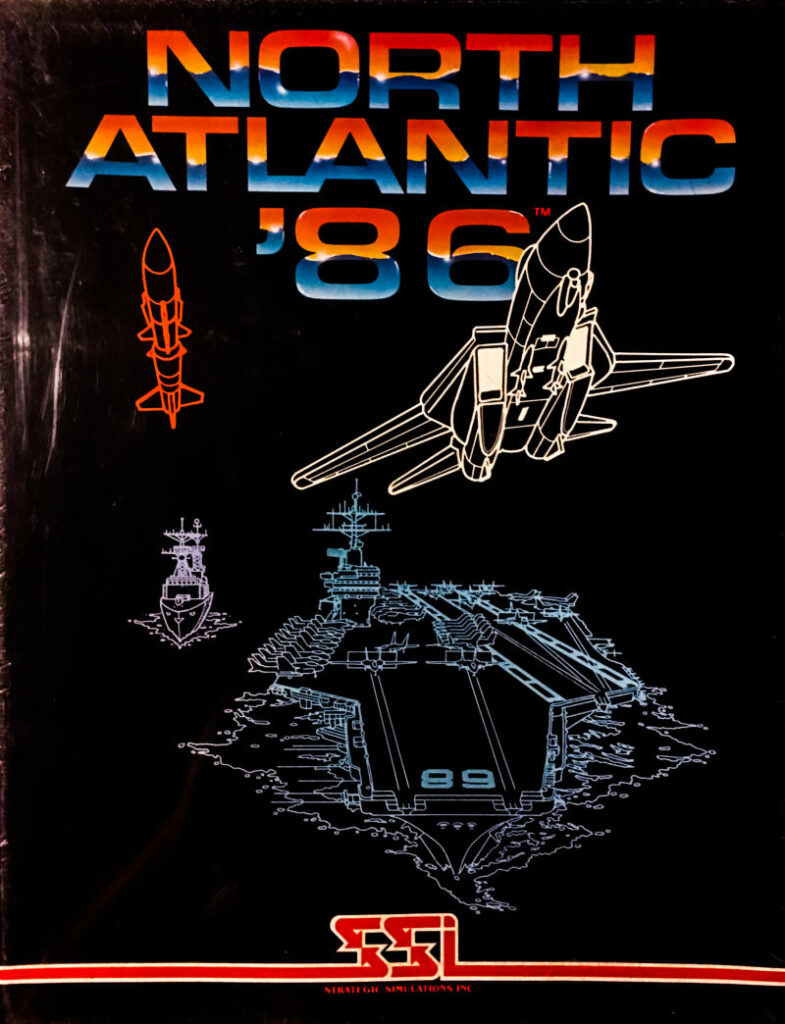
So can you summarize the capabilities of our new Ticonderoga-class missile cruiser ?
Oh, nothing too complicated : 2 helicopters, Harpoon as SSM, Asroc as ASW, MK-46 as AST but totally normal SAM. Of course, it also has powerful EW and its fancy new AEGIS CIWS.
I just wanted to know the size of the main guns and the armor !
Main guns ? Armor ? We don’t do that anymore !

Gary Grigsby’s North Atlantic ’86 is the third and last game using the Guadalcanal Campaign engine. While the two first games were WW2 historical, North Atlantic ’86 happens in the near future (for 1983) during a conflict between the Soviet Union and NATO – a common trope in the 80s (Tom Clancy’s “Red Storm Rising” was released in 1986). In May 1986, the Soviet Union, using manoeuvers as cover, attacks NATO by surprise. The Soviets steamroll most of continental Europe, with NATO forces evacuating to UK. “Most of”, because France only joined the war the 1st of August, and peaced-out on the 18th.
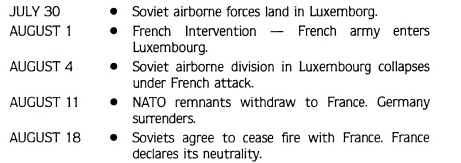
The game proposes two campaigns. The first one starts on the 7th of September and ends the last day of December. In that campaign, NATO must try to evacuate the British fleet from Scapa Flow to a safer harbour : all of the United Kingdom is within range of the Soviet bombers taking off from Hamburg and Bergen. Initially, the Faroe Islands and Iceland are under NATO control, but the Faroes cannot be defended at all, so the first campaign is all about maintaining control of Iceland and, of course, UK.
But for once I am going to play the shorter second campaign. That second campaign starts on the 1st of November until the end of December, so “only” 2 months (122 turns), but turns in North Atlantic ’86 are much much longer (5-10 minutes each), and unlike in the previous games there is as much activity during the day as during the night – so those 2 months are probably going to be as long or longer to play than the 4 and half months of Guadalcanal Campaign. Another big reason for choosing the shorter campaign is that in the earlier Grigsby games, the AI has been unable to remain active and interesting for the complete campaign, so hopefully there will be less of that with a shorter game.
In early November 1986, the situation is dire for NATO. Iceland and the Faroe Islands have been lost, the British aircraft carriers and most of their escort sunk, and UK itself (or rather, as it is represented in the game, Scapa Flow) is only hanging by the tip of a fingernail. Its “morale” is down to 40, and every turn its supply situation is below 10, it loses one more in morale that it can never recover. At 0, the Soviets receive 1000 points, enough to carry the game for them.
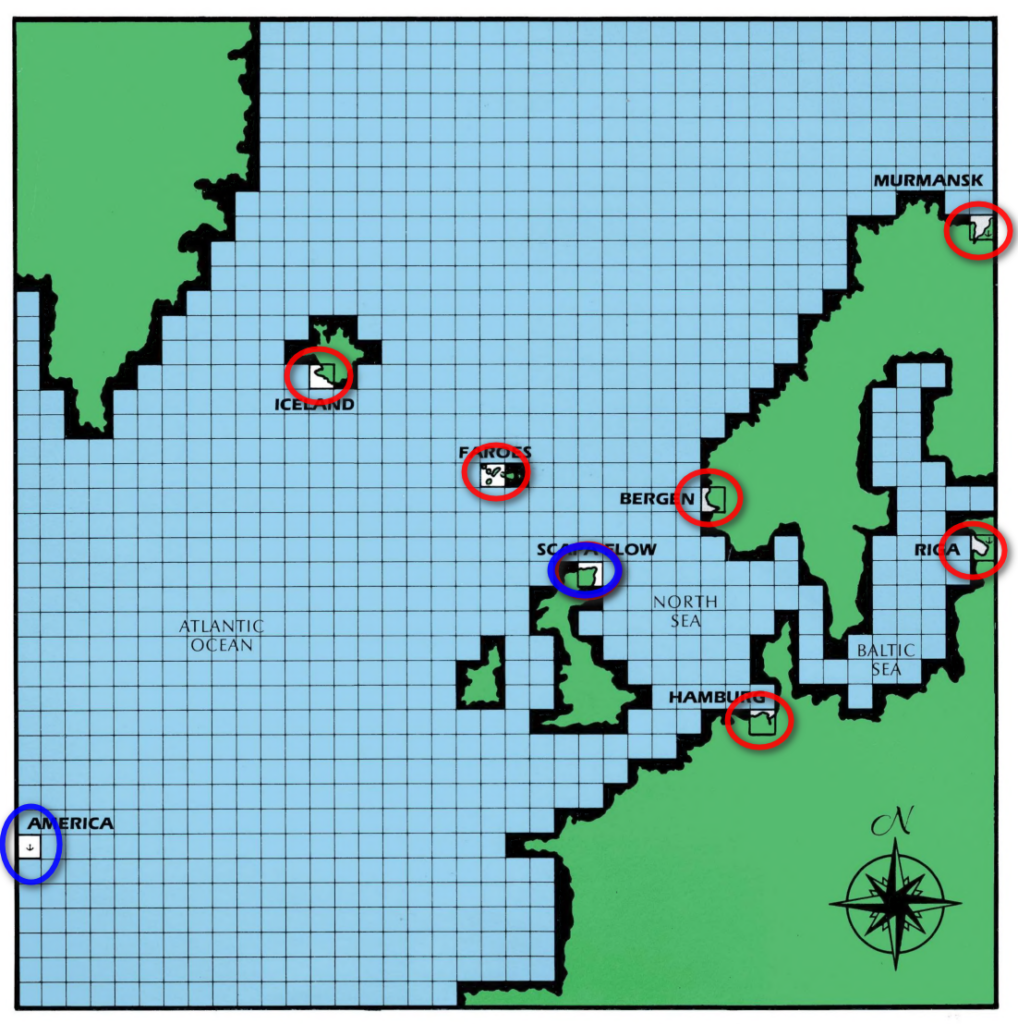
The most obvious plan is to try to send a supply convoy to Scapa Flow as soon as possible, even if it means being under attack by absolutely everything the Soviets have. If the convoy makes it through, and if the Soviet planes are grinded down, this can work, but it is all-or-nothing.
The alternative is to try to retake Iceland and even the Faroes – or at least neutralize them – as soon as possible, and only then run supply missions to Scapa Flow. It is still risky, but less so.
I immediately create 5 forces from “America”.
- A transport fleet 14 000 men and a lot of supplies in 21 transports, with particularly abundant escort (6 cruisers, 10 destroyers and 14 frigates),
- An escort force with my two available carriers : the USS Carl Vinson and the USS Kennedy. Their escort will be nothing to sneeze at either : 6 cruisers, 6 destroyers and 9 frigates,
- A bombardment force with two battleships (the USS Iowa and the USS New Jersey) and their small escort (2 cruisers, 4 destroyers, 2 frigates),
- Finally, two submarine groups : one fast composed of 9 US nuclear attack submarines (mostly Sturgeon-class), one slow with 6 British conventional submarines (all Oberon-class). One will escort the transports, the other will be used as decoy.
For the record, the campaign starts with 2 submarine fleets (1 British, 1 American, all nuclear) in the Norwegian sea ready to attack enemy ships.
I launched pretty much every ship I have, except for a few transports either too slow or not arrived yet, and a US Carrier, the USS Kitty Hawk, that is not available yet either. In total, the Americans allocated 4 of their carriers to the North Atlantic theatre in the game, but one (the USS Nimitz) is only in the long campaign so presumably sunk before the short campaign started.
In any case, the fleets are massive, here is for instance the transport fleet :
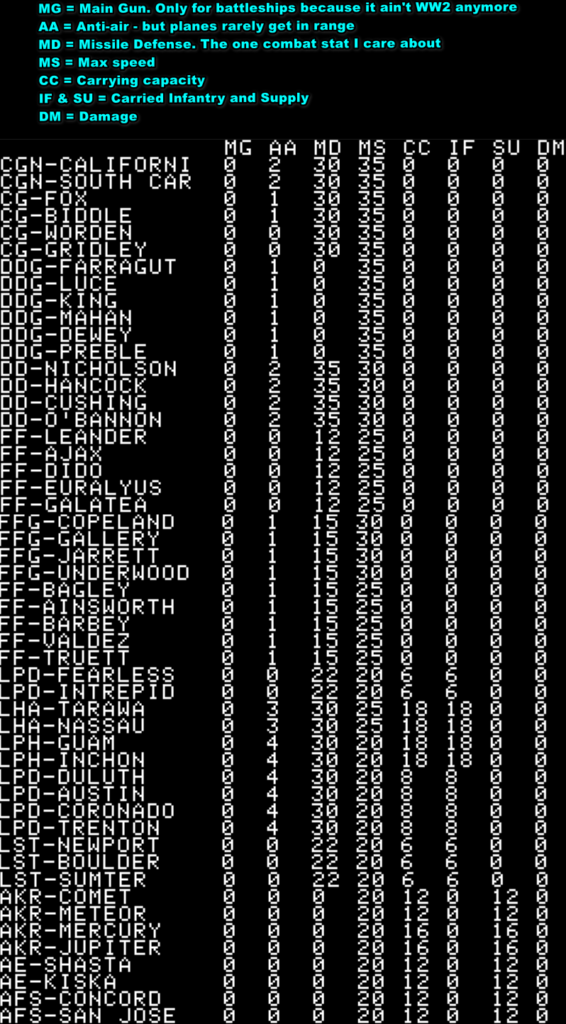
As you can see, the game went crazy with the hull classification. To keep it simple :
- C is for cruisers, DD for destroyers, and FF for the smaller frigates,
- If it starts with an “L” or with an “A”, consider it a transport and leave it to that,
- N indicates a nuclear powered-ship,
- G stands for “Guided Missiles” for ships with long-range anti-air missiles (“SAM”). Almost all ships, G or not, have long-range anti-ship missiles (“SSM”) and anti-submarine (short-range) torpedos (“AST”). All destroyers but only a few frigates have anti-submarine (long-range) missiles (“ASM”).
November 1st to November 3rd – Approaching Iceland
My initial plan is to navigate due North until I reach the South of Greenland, and only then turn North-East. It is a bit longer, but I hope to say out of range of the European planes as long as possible this way, and ideally throw off the enemy submarines, especially since I will navigate with my electronic warfare (EW) systems off for additional discretion. Of course, if the Soviets DO find me, I might be in trouble with my EW off. Meanwhile, the British non-nuclear submarines will navigate East with the EW on – not the best mission to be part of but sorry lads I need a decoy.
Before I discuss what happened to the task force, let’s get something out of the way : Scapa Flow. The Soviets immediately attack the base from Hamburg, and it is a good opportunity to show how air combat is solved in North Atlantic ’86 :
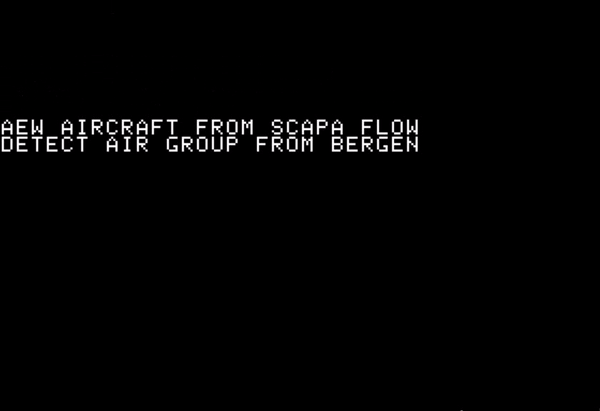
You can see the several phases of air combat :
- Planes with long-range air-air missiles [AAM] lob missiles at one another. In this case, those are my F-15 Eagle and my Tornadoes sending AMRAAM missiles, while the Soviet MIG-23 Flogger send their R-23 APEX missiles. There are a lot more AMRAAMs flying than APEXs because the game takes into account the number of missiles by plane and chance-to-lock depending on the target.
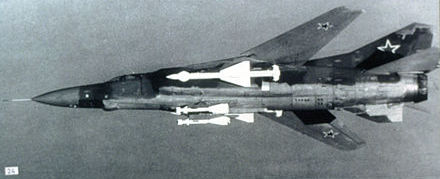
- The missiles hit their targets,
- Then the planes dogfight just like in Guadalcanal Campaign. In this case, my F-16 Falcon and Harriers, which did not have AAM, join the party.
- Finally, the bombers (Su-24 Fencer) in the enemy air force, so far only on the receiving end, get to drop their payload.
I did not show the bombing, but long story short all my supplies are gone. Scapa Flow is neutralized as an airbase. The F-15 and the F-16 fly back to America, the Tornadoes and the Harriers don’t have the operational range to do that and are left on the ground, where they are destroyed the following days. This is just as well, that’s two fewer types of planes to care about for the moment.
Well, rolling back on my navy, the “sneaky-sneaky” approach works for about half a day. A submarine group shadows me almost immediately, and soon I am under frequent attacks from Iceland.
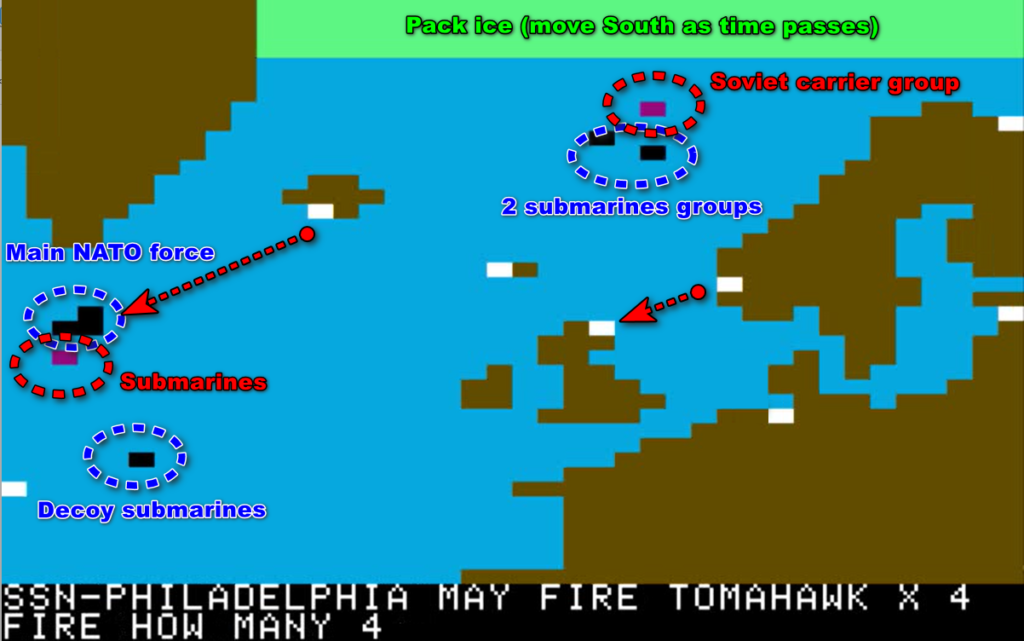
A typical raid from Iceland is 50 or more Tu-16 Badger each launching one AS-6 Air-to-Surface Missile (ASM). Fortunately, my F-14 Tomcat on my carriers carry Phoenix missiles which are very able to intercept the AS-6, and even occasionally shoot down a Badger.
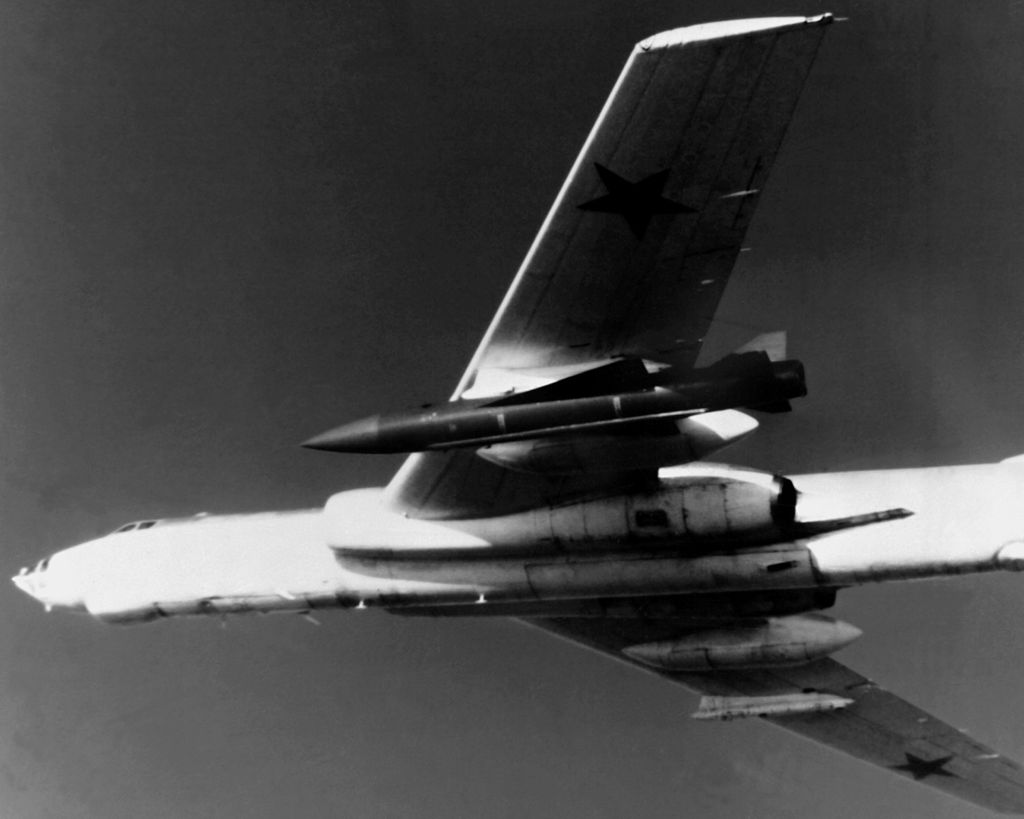
The raids are for now harmless. The Soviets do not have the critical mass yet to saturate my defence.

Meanwhile, my own submarines have detected a Soviet carrier group, that they follow and attack repeatedly, with both surface-to-surface missiles (SSM) and with good old torpedoes. They sink the cruiser Drozd and force another cruiser to return to base ; I even damage their carrier Kiev. Meanwhile, various submarines sink one another here and there on the map – my surface ships try to contribute with Iskara and Asroc anti-submarine missiles (ASM) but they are not very accurate and only sink one additional Soviet sub.
The third of November, I am in view of Iceland, and I launch my first raid against the airport. There are no enemy interceptors to stop me, and I manage to destroy some supplies. During the night, the 24 Corsairs on my carriers are even able to launch Harpoon long-range missiles at the enemy fleet, but these are not enough to overwhelm the enemy defence ; only one escort is hit.
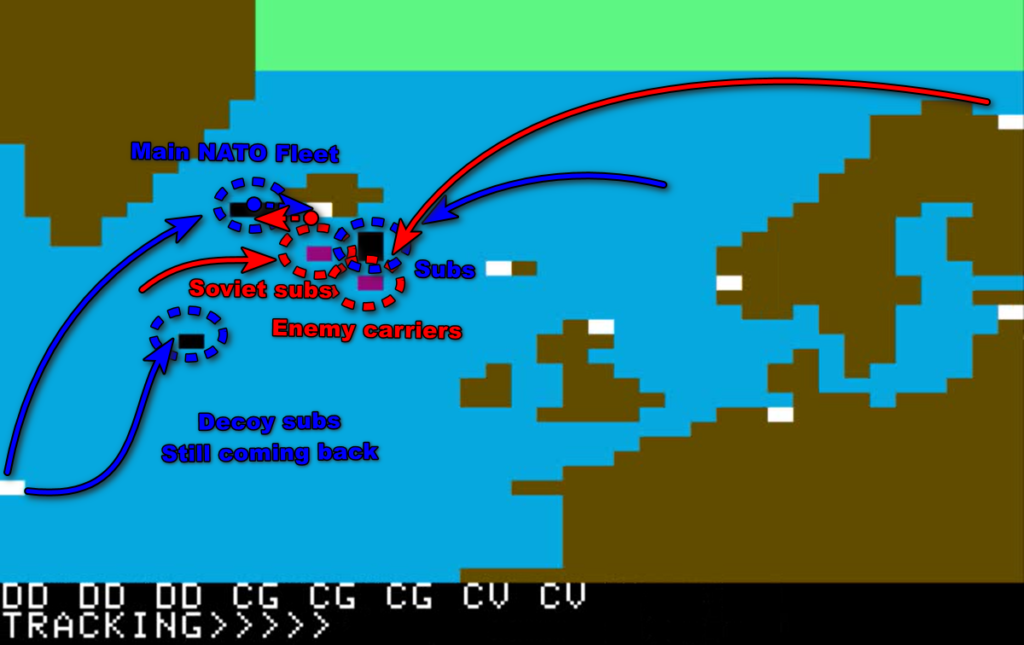
November 4th : The Battle of the Iceland Sea
On the morning of the 4th, just the first US marines landed on Iceland, the Soviet carrier group is within range of the USS Vinson and the USS Kennedy.
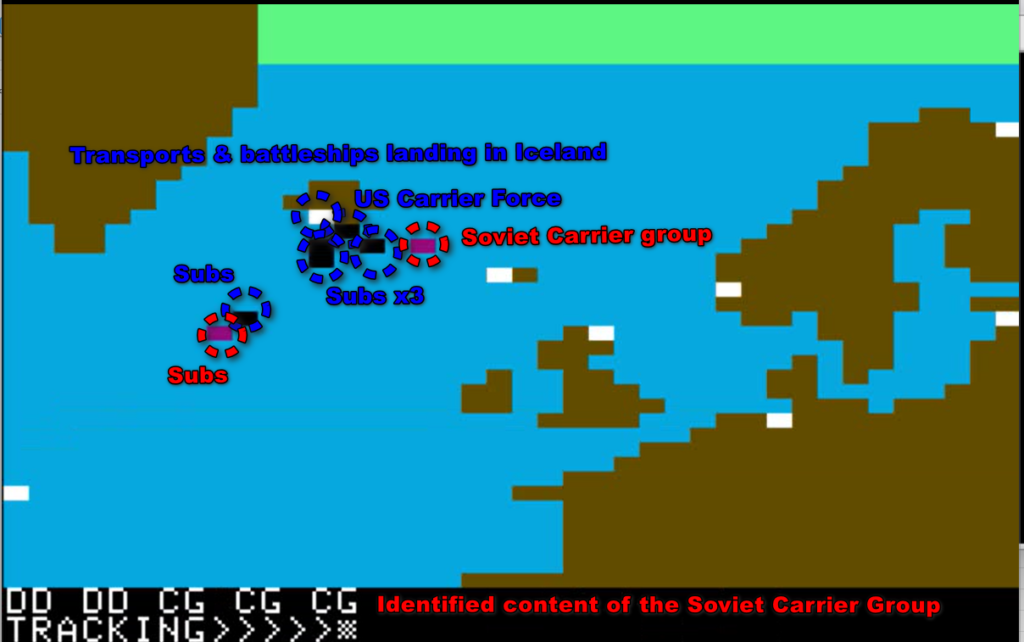
And the entirety of the NATO fleet is within range of Hamburg, the Faroes and even as far as Bergen, from where dedicated supersonic long-range maritime strike bombers Tu-22M Backfire can take-off.
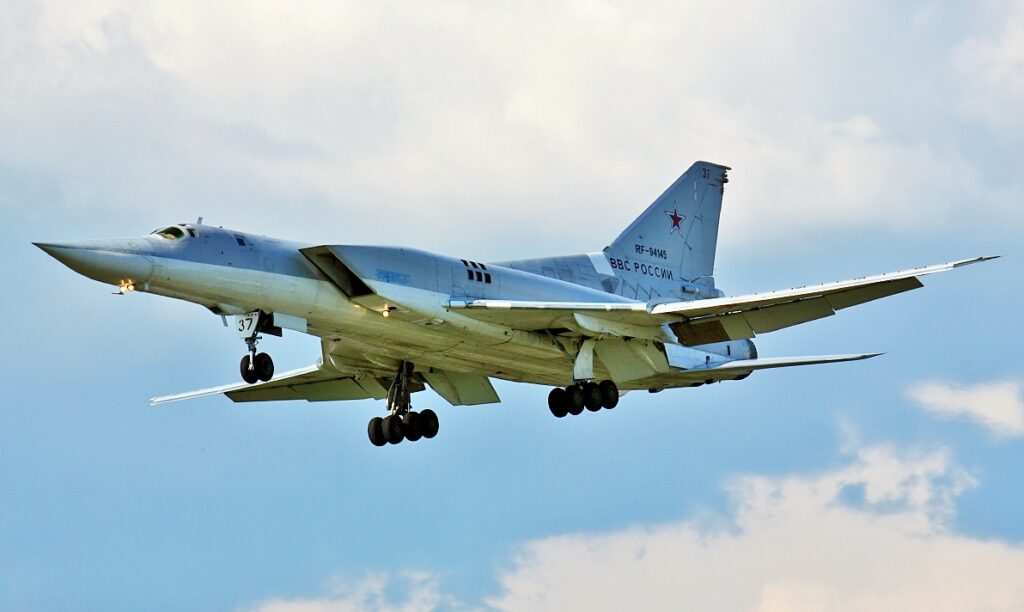
While all the Soviet planes should have probably headed toward the US carrier fleet, they do not :
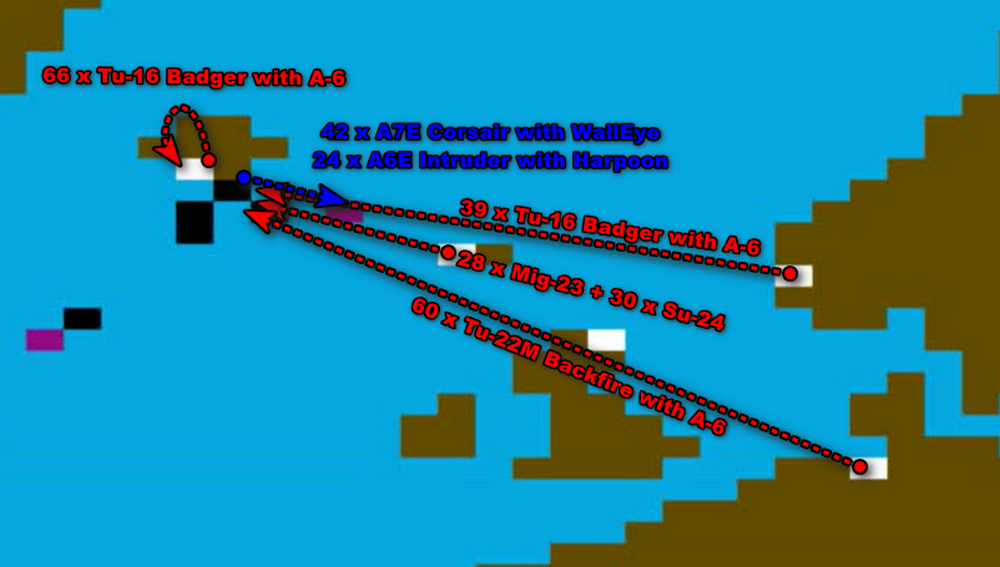
- The Badgers in Iceland head for the transport fleet,
- The planes on the Soviet Carrier Fleet do not head for anything, instead they circle above their carriers. The only carrier-capable plane the Soviets have is the Yak-38 Forger, and it has a very short range (300 km, so 3 tiles), and no long-range missiles either. The Soviet carriers are like T-Rex : scary, but with tiny arms.
Still, the Backfire from Hamburg and the Badgers from Bergen launch together almost 100 anti-ship missiles to the carrier fleet, which must also resist an attack from the Faroes. The Tomcats launch their missiles against the Mig-23 and Su-24 rather than against the ASMs, destroying a good chunk of those planes before they even arrive in range. The surface-to-air missiles (SAM) from my ships finish off most of them, and the few survivors are unable to cause any damage. Only 18 Soviet planes out of 58 make it back to the Faroes.
After that, the Tomcats still have some missiles for the incoming AS-6 ; most of them are intercepted, the rest hit a frigate called the Flatley twice, because the Soviets hated that frigate in particular. She does not survive the ordeal.
As an unexpected surprise, long-range missiles from either submarines or surface ships are also incoming, but most of them are destroyed by the escorting ships and the rest miss.
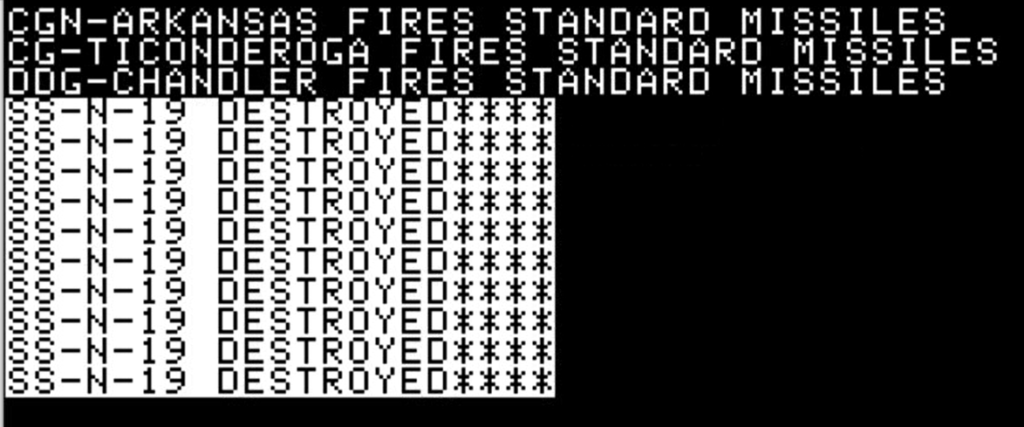
Unfortunately, while my planes were busy protecting the carriers, they were not protecting the transport fleet. The AS-6 hit mostly defenceless ships here and there, sinking 3 transports, 1 cruiser (the USS Fox), 1 destroyer and 2 frigates.
Meanwhile, my own planes attacked the enemy carriers. I ordered my planes to fire at maximum possible range, so 110 km for the Harpoon missiles on the Intruders and 50 km for the heavier Walleye missiles on the Corsairs. The Forgers failed to intercept anything (there are some complex calculations at play) though some Soviet escorts managed to shoot down a few Corsairs and missiles. The rest find their target : the carrier Minsk is sunk !

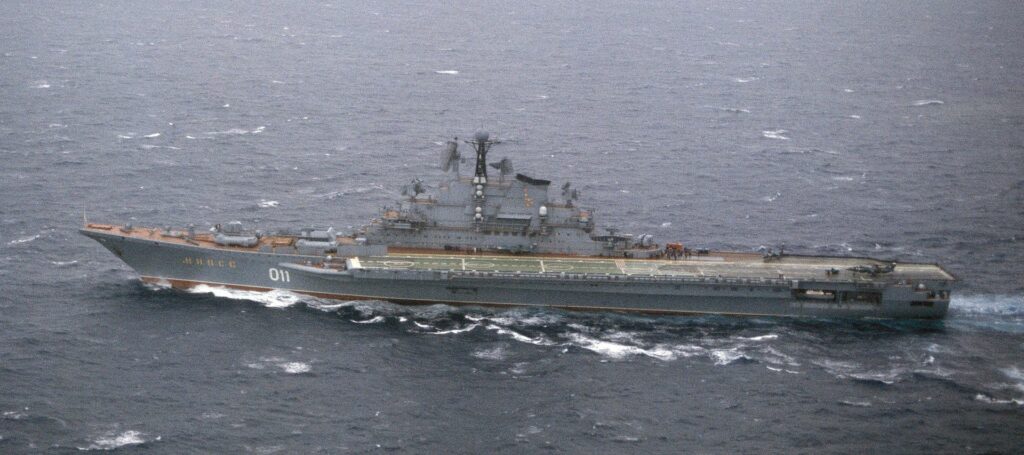
To add insult to injury, one of my submarines manages to torpedo the other Soviet carrier :

Both enemy carriers are neutralized, the Forgers have nowhere to land :

I suspect this is the last time we ever hear about the Forgers in this campaign.
During the night, as the remaining Soviet ships retreat, the US fleet is attacked again, with fewer planes (the survivors from the Faroes sit that one out) but more success as some F-14s are covering the transports again – a couple of escort ships are destroyed. Still, the battle of the Iceland Sea is a victory, with the Soviet carrier force crippled, the strike force from the Faroe Islands decimated and marines holding a foothold in Iceland.
November 6th – November 9th : The Battle for Iceland
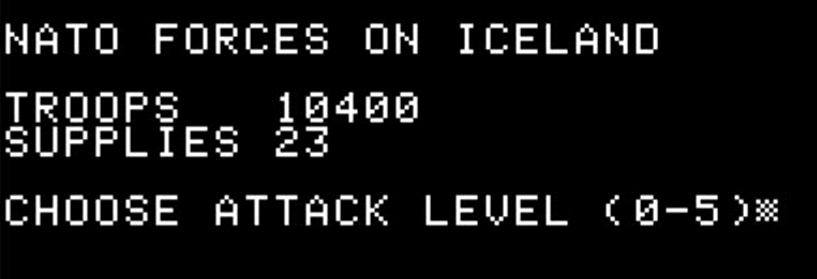
With the Soviet fleet retreating, I decide not to pursue with my carriers but only with my submarines- unlike Iceland, that fleet is no longer an immediate danger. The airport of Keflavik on the other hand is still sending twice a day roughly 60 Badgers, and unlike the Mig-23 and Su-24 their AS-6 are fired from so far that I cannot reliably shoot down their launchers. Combined with the attacks from Hamburg and Bergen, my defences are saturated from time to time and my ships get hit – and with the AS-6 one hit is enough.
It turns out I did not need to follow that fleet with my carriers anyway ; I tried to forecast its retreating route to intercept it with my submarines and hit bullseye :
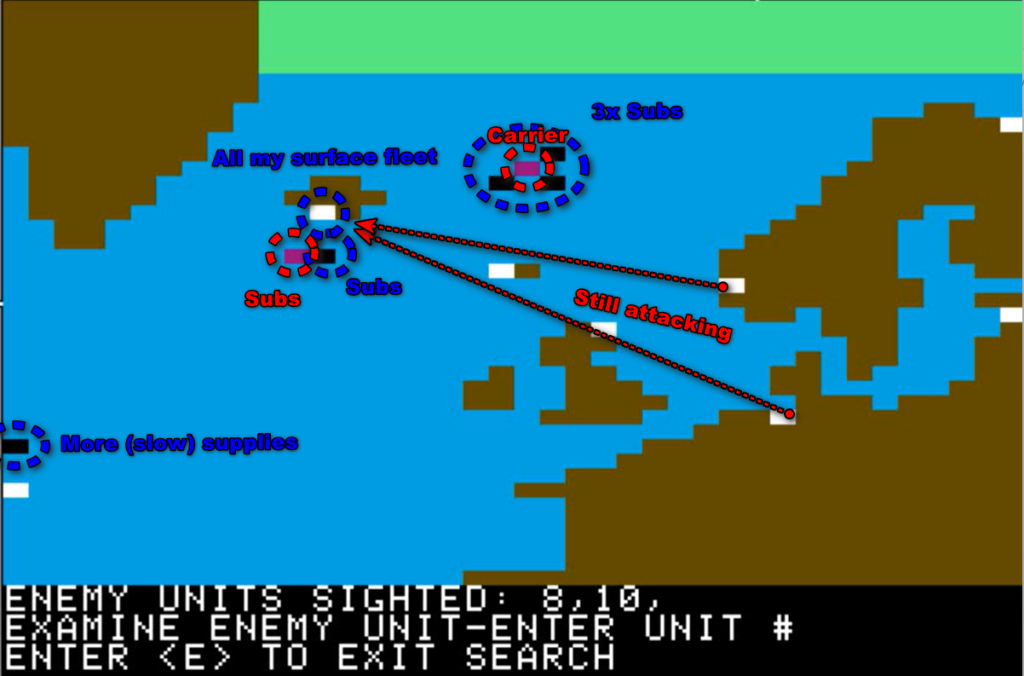
The Kiev is attacked by two submarines, the USS Spartan and the USS Cavalla. The latter sacrifices itself to deliver the coup-de-grâce.
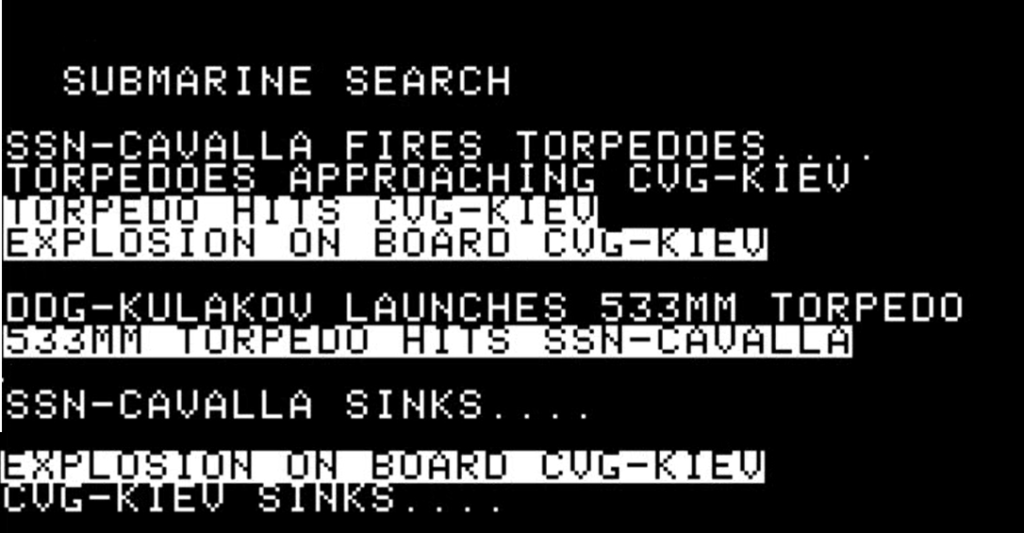
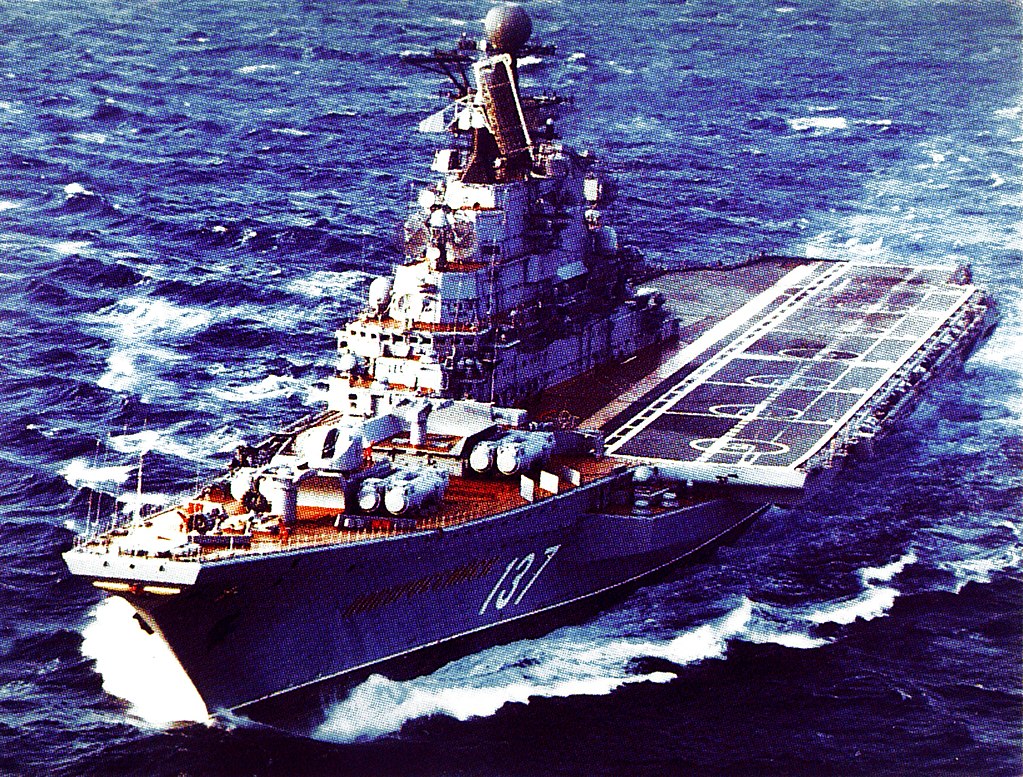
Well, that’s it for the Soviet carriers, they don’t have any other in reserve.
Back to the problem of Iceland ! It is quite isolated, and hard to supply, so my solution is to bomb the airports from my carriers until Soviet supplies run out. No supply, no air mission.
I spend another difficult day on the 6th, losing yet more ships, but it takes only one raid to put the enemy airport out of supply. Time for my men to move on the offensive ! They attack aggressively, supported by the American battleships and some of the attack planes from the USS Vinson and the USS Kennedy. The morning of the 7th of November, the airport is under attack. Supplies or not, the Soviets are not using it.
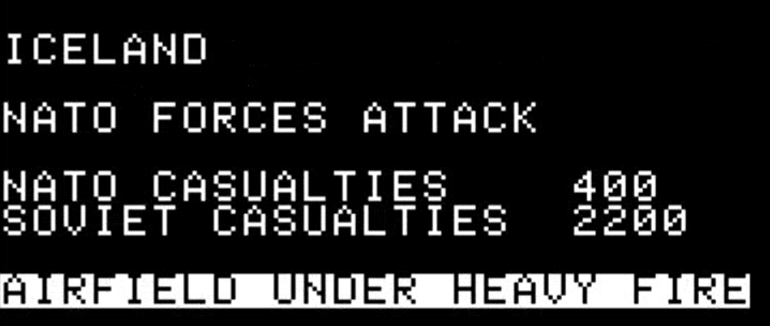
Soon after that, I finally capture the airfield, destroying 60 planes on the ground !

On the 8th, transport planes land reinforcements on the island. Iceland is de facto liberated.
In the evening, confident I have the situation well in-hands, I pull back my carriers and battleships ; the air superiority will be maintained by Tornadoes, F-15 and F-16 (80 in total) flown directly to Iceland from America. They are not idle : immediately after seeing my carriers moving away, the Soviets send attack planes from the Faroes to support their troops on the ground. It surprises me the first time as my planes were mostly flying ground support missions to mop-up the remaining Soviet infantry, but the second time all my planes were ready to intercept and the enemy is reduced again to 15 planes.
The reason my carriers had to move away is that I had split my transport fleet to send home the empty ships. Unfortunately, Soviet carriers were hiding in ambush and laid waste to my transport and my escorts, both those returning and those bringing more supplies.
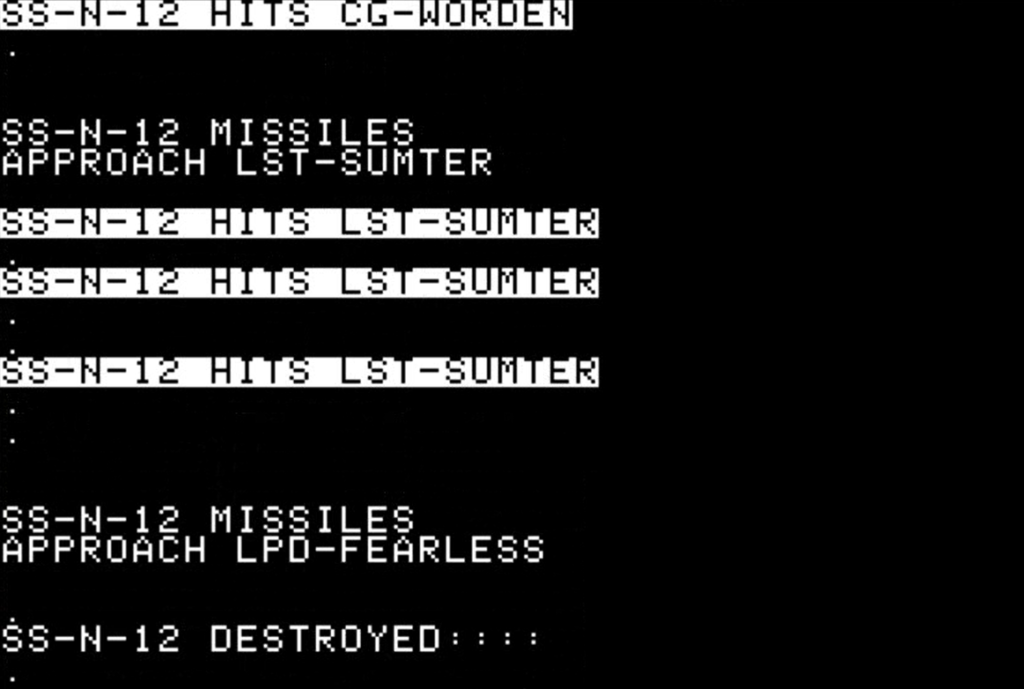
November 9th – November 11th : A long way home
On my way home, I manage to find the submarine group that had harassed my transports, and dent it badly with ASM – 3 submarines are sunk.
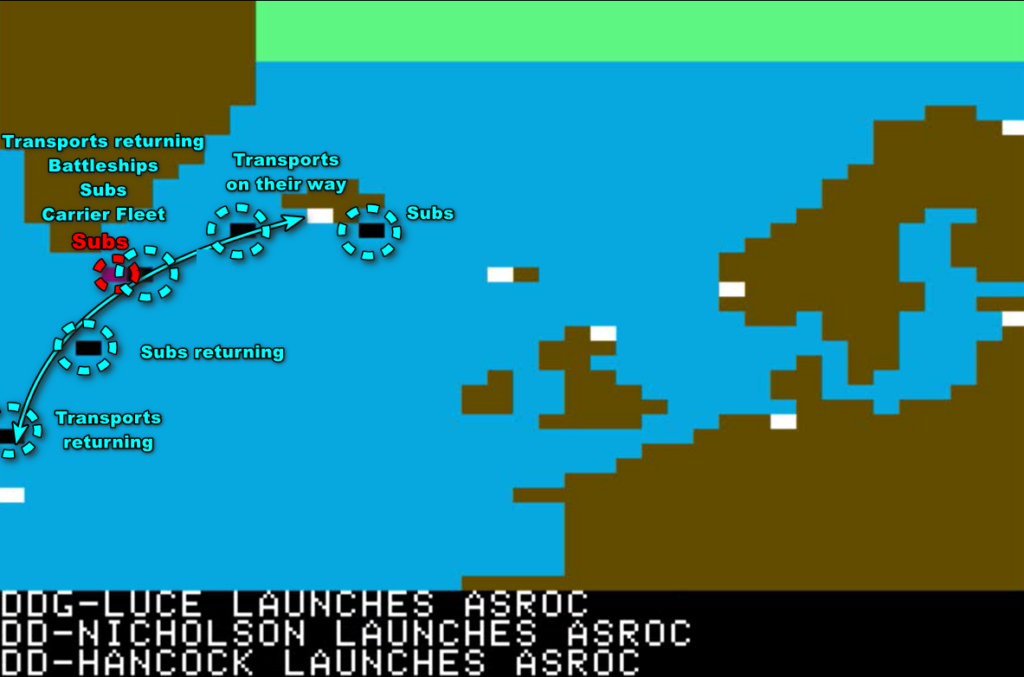
But as I almost reach home, I have a surprise :
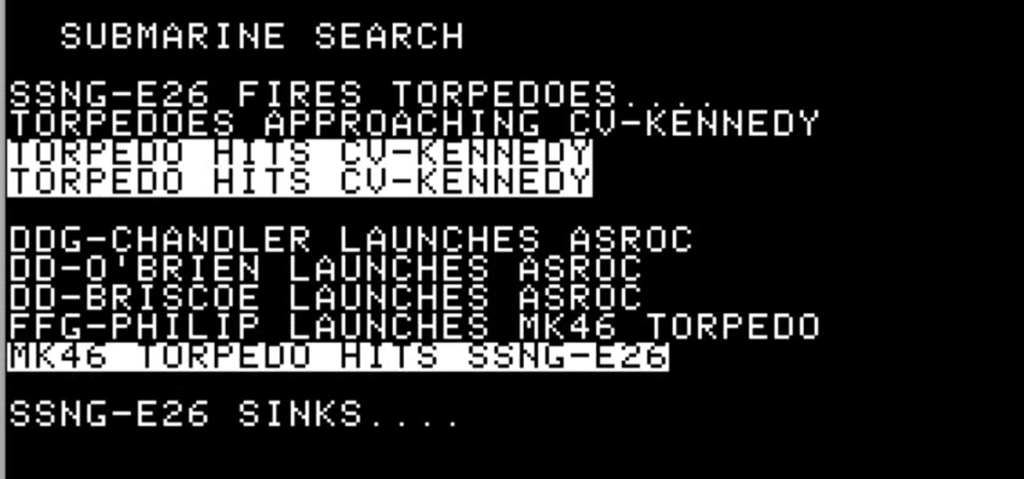
The USS Kennedy survives, but she slowed down to the speed of a transport, and any further damage will make her unable to launch planes. I am also now unwilling to send her to a port – it will quite simply take too long to repair her.
On November 12th, I am ready for the second part of my plan, but it will be for a future update. Let’s assess the situation :
- I have 19 turns (10 days) to supply Scapa Flow. I can do it, but I don’t have time to daddle,

- I have a lot of planes, but not a lot of those types of planes that can put on a carrier. I transferred some Harriers, but they are comparable to the Forgers : short operational range and no long-range missiles either. Not great.

- In terms of losses, it is pretty even, though 20% of my escorts are gone.

I had a lot of successes, but saving Scapa Flow will be challenging still. But really, I am mostly worried about the game becoming stale once I have completed that second objective. We will see soon.
Time played so far for this campaign : 4.5 hours (+ 4 hours training)